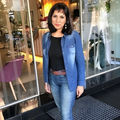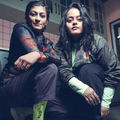Interviews
Wearable device market to expand into smart clothing
05 May '15
2 min read
By 2020, smart clothing shipments will surpass 10.2 million units annually, while body sensor shipments will reach 3.1 million units annually, says Tractica, an American market intelligence firm that focuses on human interaction with technology.
As the age of wearable computing dawns, everyday body-worn objects such as watches and glasses are getting smarter and connected. Smart clothing is no different, serving in part as a fashion accessory, but mostly driven by the “quantified self” trend that includes measurement, tracking, and analysis of the body, in the process providing tools to help people live healthier lives.
“The ultimate wearable computer is a piece of smart clothing that one can wear as a garment or a body sensor that can track and measure specific vital signs,” says Tractica’s research director Aditya Kaul. “Both of these device categories are designed to seamlessly integrate with users’ daily lives.”
According to a new report from Tractica - “Smart Clothing and Body Sensors”- the market for smart clothing and body sensors is just beginning to take shape, both from an end-user perspective and a value chain perspective. Today, sports enthusiasts are leading the adoption of smart clothing with sensor-infused shirts, shorts, sports bras, and socks that provide biometric data on muscle activity, breathing rate, and heart activity zones, all data that is not currently tracked by fitness bands or smart watches. Over the next several years, the market intelligence firm anticipates that connected apparel items will gain traction in the mass consumer market, as well.
Meanwhile, the body sensor sector is experiencing a transition as heart rate monitors decline in unit volume and newer devices like baby and pregnancy monitors, headbands, posture monitors, and 3D trackers begin to build momentum.
Tractica forecasts that smart clothing shipments will grow from 140,000 units in 2013 to 10.2 million units by 2020, while body sensor shipments will decrease from 3.0 million units in 2013 to 1.2 million by 2017, before rising again to 3.1 million units in 2020. (SH)
As the age of wearable computing dawns, everyday body-worn objects such as watches and glasses are getting smarter and connected. Smart clothing is no different, serving in part as a fashion accessory, but mostly driven by the “quantified self” trend that includes measurement, tracking, and analysis of the body, in the process providing tools to help people live healthier lives.
“The ultimate wearable computer is a piece of smart clothing that one can wear as a garment or a body sensor that can track and measure specific vital signs,” says Tractica’s research director Aditya Kaul. “Both of these device categories are designed to seamlessly integrate with users’ daily lives.”
According to a new report from Tractica - “Smart Clothing and Body Sensors”- the market for smart clothing and body sensors is just beginning to take shape, both from an end-user perspective and a value chain perspective. Today, sports enthusiasts are leading the adoption of smart clothing with sensor-infused shirts, shorts, sports bras, and socks that provide biometric data on muscle activity, breathing rate, and heart activity zones, all data that is not currently tracked by fitness bands or smart watches. Over the next several years, the market intelligence firm anticipates that connected apparel items will gain traction in the mass consumer market, as well.
Meanwhile, the body sensor sector is experiencing a transition as heart rate monitors decline in unit volume and newer devices like baby and pregnancy monitors, headbands, posture monitors, and 3D trackers begin to build momentum.
Tractica forecasts that smart clothing shipments will grow from 140,000 units in 2013 to 10.2 million units by 2020, while body sensor shipments will decrease from 3.0 million units in 2013 to 1.2 million by 2017, before rising again to 3.1 million units in 2020. (SH)
Fibre2fashion News Desk - India
Popular News
Leave your Comments
Editor’s Pick
Christian Guinet
French Textile Equipment Manufacturers’ Association (UCMTF)
Therese Premler-Andersson
Textile Machinery Association of Sweden (TMAS)
































-Ltd..jpg?tr=w-120,h-60,c-at_max,cm-pad_resize,bg-ffffff)





.jpg?tr=w-120,h-60,c-at_max,cm-pad_resize,bg-ffffff)
.jpg?tr=w-120,h-60,c-at_max,cm-pad_resize,bg-ffffff)






